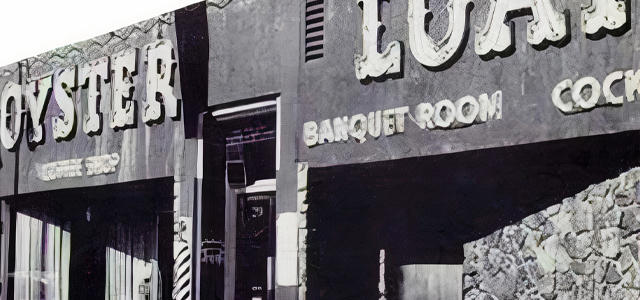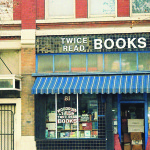The Secret Slav Restaurant Society of fin-de-siècle San Jose has been revealed.
It all began as I hunted for ghosts along the downtrodden block of Santa Clara Street between First and Second. The grand sweep of history would not leave me alone, especially now that various entities are jockeying for the future of 31 E. Santa Clara. The building was once Johnny V’s and also Paddy’s 30 years ago, but that’s just the recent stuff.
At first, phantasms from the epic 75-year run of the Oyster Loaf Restaurant showed up to guide me, but the encounter soon exploded into a discovery of several fine dining spots owned by Slav immigrants. The research took me all the way back to the Habsburg Monarchy. I became a closet Slav.
Originally from the island of Brac in what was then Dalmatia, or Croatia, or the Austro-Hungarian Empire depending on your preference, Frank Arnerich opened the Oyster Loaf at 31 E. Santa Clara in 1912. Arnerich came to the US in 1900 when he was 11, and then to San Jose in 1907, where he married into another prominent family from the same part of the world, the Chargins. He ran the Oyster Loaf for 46 years before retiring and selling the business. If we are to believe an old Merc article, Arnerich was friends with former US president Herbert Hoover, who once dined at the Oyster Loaf.
Anyone familiar with this block of Santa Clara nowadays won’t believe it was once enough of a bastion of high society to attract Herbert Hoover. How times change.
But I’m getting ahead of myself. Upon his retirement Arenrich sold out to the Greeks. The legendary Louie Gundunas bought the Oyster Loaf in 1958 and owned it for almost twenty years, right along with his stewardship of the iconic Balkan Village Restaurant in Los Altos.
In 1975, the Mercury-News profiled the Oyster Loaf’s greatest customer, the 79-year-old Mr. August “Gus” Minjoulet, whose insurance office was around the corner. Originally from a family of French pioneers, Gus had dined at the Oyster Loaf almost every day since it opened in 1912, for a whopping total of 63 years. He rightly had his own table and often told stories about the good old days. According to the Merc, one of Gus’ yarns went like this: “You could hop aboard a streetcar at First and Santa Clara Streets with a shotgun, get off at 10th and Keyes Streets, bag three jack rabbits in the orchard, and come back and cook them for dinner.”
Thanks to Gus and Louie, the French-Greco-Balkan theater of operations embodied the original spirit of the Oyster Loaf. There will never be a future version of San Jose when someone eats in the same restaurant for 63 years. It simply will not happen. Gus sadly passed away a year later and after a few more changes of ownership, The Oyster Loaf was last listed in the books in 1987, making it San Jose’s longest running restaurant.
I could end the column here, but I won’t because the Oyster Loaf was not the only legendary Slav-owned place. At one time, a whole nexus of restaurants run by Slav immigrants flourished in the neighborhood. For example, another pillar of the San Jose community, Lorenzo Slavich, owned Slavich’s Restaurant at 36-38 W. San Fernando, beginning in the late 19th century. An initial partner of his was Joseph A. Chargin, who opened Chargin’s Grill on Fountain Alley in 1900.
Going back even further to 1870, one would find the Overland Restaurant at 21 N. First, initially owned by Marko Glubetich and later operated by Steve Zaro, who in 1910 opened his own place, Zaro’s Grill at 23 W. Santa Clara. There was also the Saddle Rock Grill, owned by Billy Suttich and Michael Bautovich. All of these characters were Slav immigrants from the old Austro-Hungarian Empire, and all were involved in the Slavonian American Benevolent Society, which was located at 129 N. Market.
In the end, history enlightens. It makes our city more interesting. If some clown can stumble through the gritty apocalypse of modern-day Santa Clara Street and wind up in Central Europe, then you can too. Try it someday.

 My Back Pages
My Back Pages  Cannabis and Covid
Cannabis and Covid 


